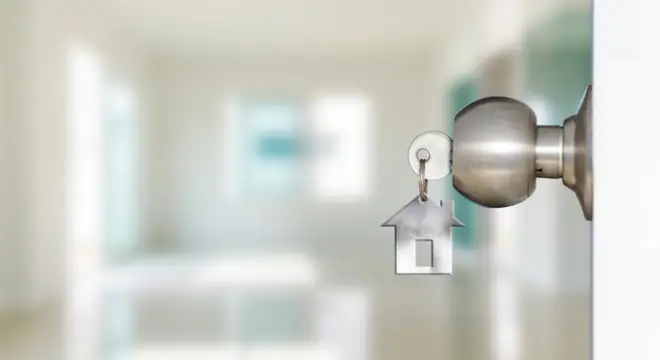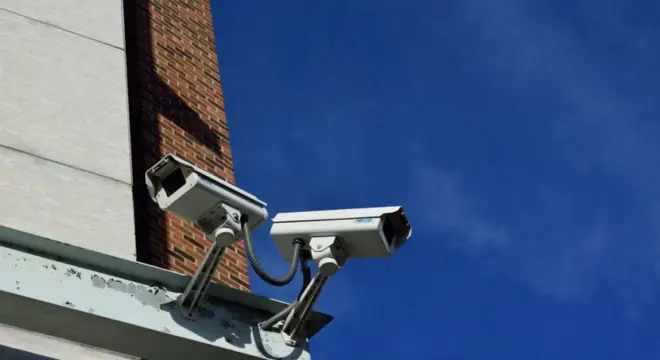8 Overlooked Home Security Threats and How to Guard Against Them?
Today, concern for security, privacy, and safety will be at the top of one’s checklist. It could determine the level of comfort that you and your loved ones will experience in your home. After all, your residing place is designed to be a sanctuary for you and your kin, and with a few measures, you can turn it that way.
This article explores 8 common yet overlooked home security threats. From burglary and vandalism to cyber threats in smart homes, each point discusses potential risks and preventive measures. We also cover physical threats like home invasions, identity theft, and natural disaster preparedness to ensure complete safety at home!
Continue to this article page, discover more, and enhance your home’s security for everyone inside.
Types of Home Security Threats
1. Burglary
Burglary is one of the most common home security issues, targeting properties without adequate security measures. Burglars generally look for quick, inconspicuous entry points, such as unlocked windows or doors. According to crime data, homes without security systems are 300% more likely to be targeted. To deter burglars, ensure all entry points are secure, install deadbolts on doors, and invest in a monitored alarm system. An alarm not only alerts you but also discourages intruders.
Example: Surveillance cameras provide a strong visual deterrent for potential burglars. Discover the key benefits of system surveillance cameras to see how they can secure your home.
Redfin, a real estate website, recently removed neighborhood crime data from its listings, citing concerns that such information could inadvertently reinforce racial bias rather than accurately inform about neighborhood safety. This decision highlights the complexities of how we perceive safety; for more on this, check it out.
2. Vandalism
Vandalism refers to crimes committed in writing graffiti, smashing windows, or destroying property, among other things. These acts can be viewed as slight annoyances capable of leaving psychological scars on the residents making them feel insecure. Not being able to prevent vandalism can be countered by enhanced visibility of the exterior through adequate illumination.
Almost all types of outdoor lights can be effective in discouraging vandals, especially, motion sensing ones that enhance chances of detection. Community watch programs promote local residents’ awareness, reducing the occurrences of such acts.
3. Home Invasions
A home invasion occurs when residents watch the crime being committed on them, so this is a more serious crime than burglary. Such crimes can result in violent interactions and are therefore the most risky crimes. Improvement of safety measures comprises adding security surveillance as well as using add-on reinforced locks on doors and windows.
It is advisable to replace doors with solid-core doors that are much stronger against forced entry. Developing an emergency plan which might include a safe room and getting in touch with the authorities helps provide a strategic reaction in case of an invasion.
Example: Installing a reliable alarm system can be one of the strongest deterrents against intrusions. To understand how an alarm system works in detail, check out our guide on the home alarm system working process.

4. Identity Theft
Identity theft has become more common as intruders have begun breaking into homes in search of personal information such as bank accounts, social security numbers, and medical records. The consequences of identity theft can be wide-reaching, with some impacts including debt and impaired credit among other effects. To prevent this from happening, make it a rule to shred important documents into pieces before disposal, create strong passwords, and keep sensitive information out of reach.
5. Online Safety for Children
As children spend more time on the internet, they encounter dangers such as cyberbullying being exposed to inappropriate content, and even being groomed by an online predator. As a preventive measure, install parental control features on their devices, educate them on online safety, and discourage the sharing of personal info or contact with strangers over the internet. Advise children to regard online interactions with the same level of trust as they would with people they have just met in person.
Further Note
The UK case of a girl who was groomed online and later charged with terror offenses is a critical reminder of the dangers posed by exposure of children via the internet.check it out
6. Natural Disasters Preparedness
Extreme weather phenomena such as cyclones, torrential rains, or tectonic movements can indeed pose irrevocable damage to the security of a home. To mitigate these threats, it is advisable to strengthen the door and windows, make sure that all the loose items outside of the house are locked up and have an emergency kit in place. Families should also draw up an emergency plan comprising of evacuation sites, escape routes, and alternative communication contacts. The need to be insured and prepared is compounded by what appears to be possible budgetary constraints to disaster relief services – Project 2025.
7. Cybersecurity for Smart Homes
In the age of technology, a new aspect of home security is posed by cyber threats due to the increased use of smart devices. Focus on software updates, use of strong and unique passwords for each device as well as enabling two-factor authentication. Advise them to improve the security of their Wi-Fi networks by defining strong passwords, and using no guest networks to decrease chances of cyber attack via smart home devices.
Example: Smart cameras, especially sight sensor cameras, can significantly enhance your home’s security by providing advanced monitoring capabilities. Learn more about how sight sensor cameras work and their benefits here.
8. Community Involvement and Vigilance
A well-knit community can play an exemplary role in ensuring safety in neighborhoods. Give examples of how neighborhood watch schemes and regular contact with nearby residents can protect people from future criminal activities. Recommend that the readers familiarize themselves with their neighborhoods, and know the crime statistics within the area and safety tips. When communities come together, such an alliance can significantly decrease criminal activities and protect everyone in that neighborhood.
conclusion
Surveillance for your house security should be undertaken in some ways, including physical security measures against burglary and vandalism, as well as cyber security and natural disaster preparedness. Basic actions, such as locking the doors, participating in neighborhood activities, and protecting your identity from theft, help lower threats. Smart devices, which make life easier, increase the need for cyber security to prevent breaches. Taking preventative measures, thorough preparation, and being alert ensures that you, your family, and your environment are better protected and secured in each possible scenario.


